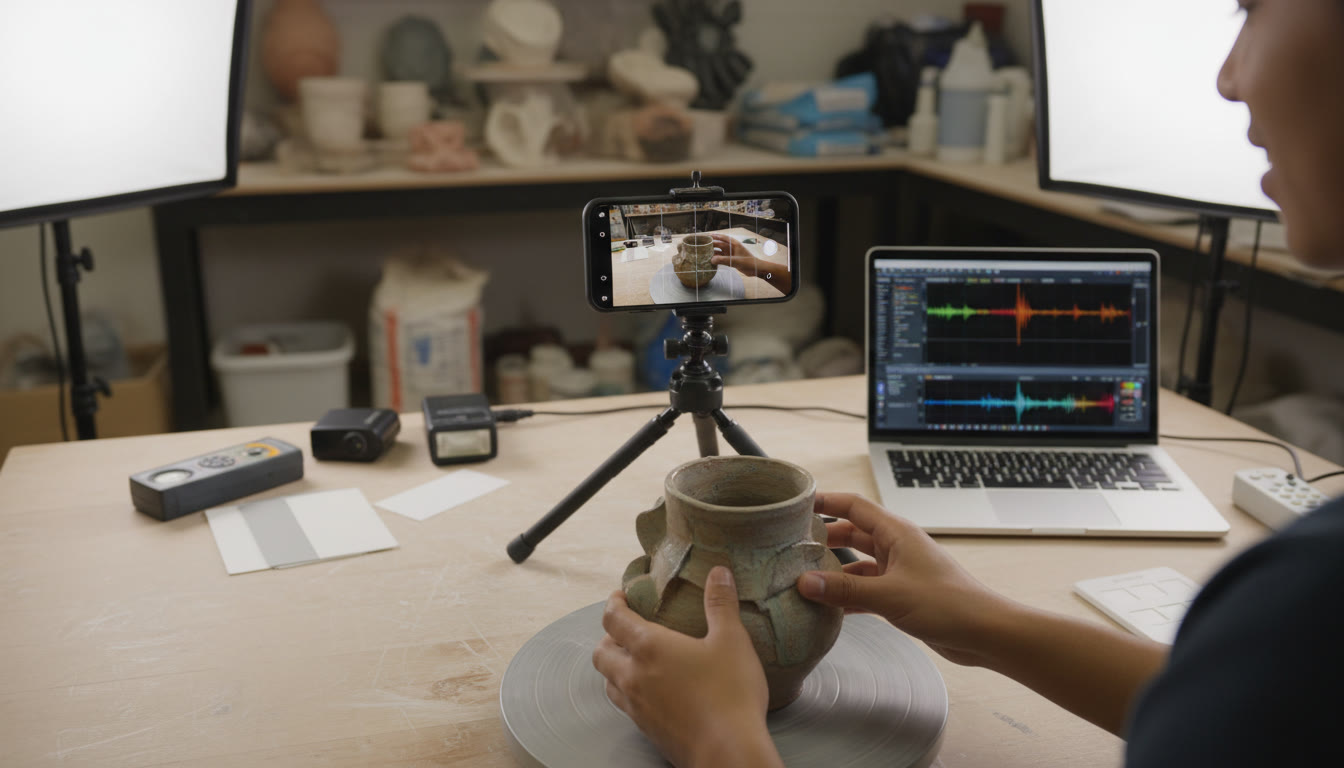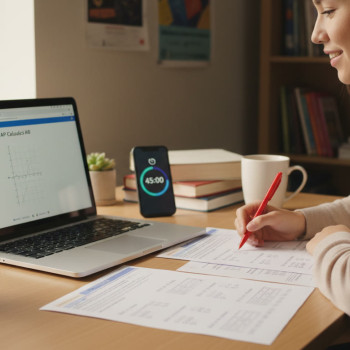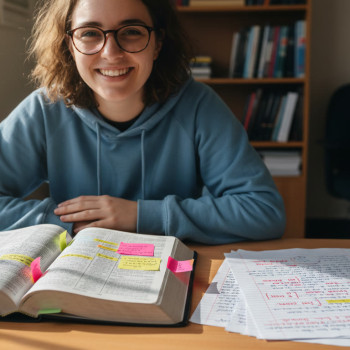Introduction: Why the AP Art Portfolio Matters—and What You, as a Parent, Can Actually Do
If your teenager is elbow‑deep in sketchbooks, sticky with paint, or obsessing over the perfect lighting for a photograph, you’re not just watching a hobby unfold—you’re watching a college‑level submission take shape. For high school students taking AP Art and Design (2‑D, 3‑D, or Drawing), the end result is a portfolio submitted to the AP Program. That portfolio is evaluated by trained readers and turned into an AP score (1–5). Beyond the score itself, the portfolio is a concrete set of work that colleges and art programs may consider during admissions.

This post walks you through how those portfolios are read, what the scoring rubrics really want to see, how admissions officers and art school reviewers interpret an AP submission, and practical ways you can support your child without becoming the project manager. I’ll include clear examples, a handy comparison table, and a few real‑world tips on timelines, presentation, and meaningful revision. Where it naturally fits, I’ll note how Sparkl’s personalized tutoring—1‑on‑1 guidance, tailored study plans, expert tutors, and AI‑driven insights—can help students focus their efforts smartly and confidently.
Quick Overview: The Structure of AP Art and Design Portfolios
There are three AP Art and Design portfolio types: AP 2‑D Art and Design, AP 3‑D Art and Design, and AP Drawing. Each portfolio is submitted digitally and consists of two main sections: Sustained Investigation (60% of the score) and Selected Works (40% of the score). The Sustained Investigation demonstrates a body of work developed through practice, experimentation, and revision; Selected Works highlight pieces that best showcase technical skills and synthesis of ideas.
What the AP Readers Are Looking For
- Sustained investigation and growth: evidence of a guiding inquiry, experimentation, and intentional development over time.
- Technical skill and craft: ability to handle materials and processes appropriate to the portfolio type.
- Creative thinking and synthesis: how ideas, processes, and materials come together in meaningful ways.
- Presentation and documentation: clear images, thoughtful written evidence describing intent and process, and accurate labeling/citations where needed.
Behind the Curtain: How AP Readers Score Portfolio Components
AP portfolios are scored by trained readers—college professors, art teachers, and practitioners—using rubrics aligned to the course and exam description. Importantly, scoring isn’t subjective praise; it’s a rubric‑driven judgment against clearly defined criteria. Readers assess the Sustained Investigation images and written evidence as a unit (60%), and then evaluate the Selected Works (40%). Each component receives separate consideration and then contributes to the overall score.
Practical Breakdown of the Two Sections
- Sustained Investigation (60%)
- Typically includes multiple images (e.g., 15 images for many portfolios) documenting the development of an inquiry.
- Must include a written statement describing the question or driving focus and how the work developed through practice and revision.
- Selected Works (40%)
- Smaller number of fully realized pieces (e.g., five images) that demonstrate skill, resolution, and synthesis of ideas and materials.
- Each image typically includes a short description of materials, processes, and the idea behind the piece.
What Separates a Good Portfolio from a Great One?
It’s tempting to think quality equals nice photos and impressive finished pieces. Those are part of it. What elevates a portfolio is coherence, depth of investigation, thoughtful reflection, and deliberate revision. Below are the practical differences and examples to clarify the point.
Examples to Illustrate Quality
- Surface Level (Good): Several strong, finished pieces that show technical competence but little relationship to each other. Limited evidence of revision or idea development.
- Focused (Better): Pieces clearly connected by a visual or conceptual thread. Some examples of reworking, exploration of materials, and narrative in the written evidence.
- Investigative (Great): A clear inquiry (a guiding question) that is explored through iterative experiments, failed attempts that led to breakthroughs, and final pieces that show both craft and conceptual evolution. Written evidence reads like a revealing map of the student’s thinking.
How Colleges and Admissions Officers View an AP Art Portfolio
Not every university treats AP scores, or portfolios, the same way. Liberal arts colleges and specialized art schools often place the strongest emphasis on the artwork itself; some use AP scores for credit or placement in foundational studio courses. For many selective colleges, a strong portfolio—independent from the AP score—can be used in the admissions process as a demonstration of sustained commitment and capability in the arts.
Admissions officers typically look for:
- Authenticity of voice: does this student have something to say?
- Evidence of growth and persistence: have they worked on this over time?
- Technical readiness: will they succeed in intro college studio courses?
- Potential for development: do they show curiosity and openness to experimentation?
Tip for Parents
Encourage your child to think of the AP portfolio both as an exam and as a component of their artistic narrative. If they’re applying to art programs, a well‑curated AP Digital Portfolio can be repurposed—select images and craft a slightly different narrative for admissions if needed. Help them keep versions and notes; versions tell a story of progress.
Timeline and Checklist: What To Do, Month By Month
Deadlines matter. The AP Art and Design portfolios have an AP Program submission deadline in May; your teacher or coordinator will set an internal deadline earlier. Build backward from that point. Here’s a condensed timeline to keep on the fridge.
| When | Focus | Parent Action |
|---|---|---|
| Start of Course (Fall) | Explore and experiment; begin collecting ideas. | Encourage curiosity; provide a dedicated workspace and materials. |
| Midyear (Winter) | Narrow inquiries; begin sustained projects and document process. | Help manage time; check in on documentation and digital photos. |
| Spring (1–2 months before internal deadline) | Revise, finalize, and curate Selected Works; write evidence statements. | Arrange critiques (teacher or mentor); help with deadlines and tech needs. |
| Internal Deadline (usually before AP deadline) | Teacher reviews, plagiarism checks, final edits. | Support by reducing other obligations, celebrating milestones. |
| AP Program Deadline (May) | Submit portfolio through the AP Digital Portfolio. | Make sure login details are set; confirm submission. |
Presentation: The Little Things That Make a Big Difference
Digital submission levels the playing field, but it also raises the bar for documentation. Crisp, well‑lit images and clear written evidence make it easier for readers to understand the work and the process. Here are practical presentation tips you can help with.
- Photograph early and often: document progress shots—these are part of the Sustained Investigation.
- Use neutral lighting and backgrounds: a simple gray or white backdrop and natural, even light show details best.
- Label carefully: titles, dimensions, media, and a one or two‑line description for Selected Works help readers orient quickly.
- Keep written evidence specific: avoid vague praise; instead describe decisions, materials, and what was learned through revision.

Common Pitfalls and How to Avoid Them
Many portfolios fall short for predictable reasons. Knowing these in advance helps you steer your child away from avoidable mistakes.
- Scattershot work: a collection without thread. Encourage a guiding question or theme.
- No evidence of revision: show drafts, experiments, and reworked pieces to prove growth.
- Poor documentation: bad lighting or incomplete descriptions obscure strong work.
- Last‑minute curation: rushing to choose pieces usually sacrifices reflection and cohesion.
How to Support Without Taking Over
Parents are essential cheerleaders, but the student’s voice must shine through. Here’s a short checklist for supportive actions that preserve student ownership:
- Ask open questions: “What was your guiding question? What didn’t work?” rather than “Do you like this color?”
- Provide logistics: materials, transportation, a quiet workspace, or a decent camera/phone setup.
- Set deadlines together and celebrate milestones.
- Arrange critiques from teachers or independent mentors (not to rewrite the work, but to prompt revision choices).
How Tutoring and Mentoring Fit In—Where Sparkl Helps Naturally
Many students benefit from targeted support: feedback on the inquiry statement, help with documenting process, practice critiques to strengthen revision cycles, and guidance on visual storytelling. That’s where one‑on‑one tutoring and mentoring can be invaluable. Sparkl’s personalized tutoring model—expert tutors who provide tailored study plans and AI‑driven insights—can help a student refine their inquiry, structure their Sustained Investigation, and prepare crisp written evidence that complements the images. When tutoring focuses on process documentation, critique practice, and time management, it boosts the portfolio’s narrative coherence without taking authorship away from the student.
Examples of Effective Tutoring Interventions
- Crafting a tighter inquiry statement that guides the work’s evolution.
- Setting a revision schedule and prioritizing which pieces to rework for the Selected Works section.
- Mock scoring sessions to help students understand the rubric and respond to it strategically.
Realistic Expectations: Scoring, Credit, and Admissions Value
AP Art and Design portfolios are scored 1–5. A high score may earn college credit or placement at some institutions, but policies vary widely. Even if a college doesn’t award credit, a professionally presented AP portfolio is a strong signal of commitment and preparation—something admissions readers value highly for applicants to studio art majors and even for non‑art applicants demonstrating creative thinking.
How to Use the AP Portfolio Beyond the Score
- Repurpose images and statements for college supplemental portfolios or application galleries.
- Use the Sustained Investigation statement as the basis for an artist’s statement or a supplemental essay about creative practice.
- Share process work during interviews or portfolio reviews to demonstrate curiosity and resilience.
Sample Case Studies (Short, Parent‑Friendly Scenarios)
Reading examples helps make the rubric concrete. These short case studies show common paths students take and how small changes made big differences.
- Case A — The Photographer Who Found a Theme: Started with scattered strong photographs. With guidance, narrowed to environmental portraiture exploring identity in two communities. Added early process images and a clear inquiry—moving from ‘pretty photos’ to a coherent, investigative body that readers found compelling.
- Case B — The Sculptor Who Embraced Revision: Initially submitted five finished sculptures with limited documentation. After teacher critique and a few rounds of reworking, the student submitted step photos and notes about material failures and solutions—evidence of growth that improved the portfolio’s impact.
- Case C — The Painter Who Documented Everything: Already technically strong, this student elevated the portfolio by carefully writing what each revision taught them. That reflection turned competent painting into compelling storytelling through art.
Practical Resources and Next Steps for Parents
What should you do tomorrow, next week, and next month? Here’s a condensed action list that’s specific and practical:
- Tomorrow: Confirm the AP portfolio internal deadline with the teacher and check digital access/login details for the AP Digital Portfolio.
- Next Week: Make a simple documentation plan—number of photos per piece, where process shots will live, and how written evidence will be drafted and stored.
- Next Month: Arrange a critique session with the teacher or mentor; consider targeted tutoring if the student needs help with inquiry framing or critique practice.
Final Thoughts: Keep Creativity Central
At its best, the AP Art and Design portfolio is not a test to be ‘aced’ and then forgotten; it’s a record of a young artist’s labor, curiosity, and creative bravery. As a parent, your most powerful contributions are patience, practical support, and thoughtful questions that help your child reflect—rather than directives that steer the work for them.
If you’re thinking about additional support, look for tutors or mentors who center the student’s voice, help structure the investigation, and build confidence in how to speak about the work. Personalized tutoring—like the tailored, 1‑on‑1 guidance Sparkl offers—can be especially helpful for students who need scaffolding in organization, critique practice, and translating process into crisp written evidence. The goal is to amplify the student’s authorship, not replace it.
Above all, celebrate the process. The portfolio—regardless of score—will likely be one of the most vivid records of your child’s high school creative life. Help them tell that story honestly, clearly, and with pride.
If You Want Help Next
Start by mapping deadlines and making a short checklist of documentation tasks. If a student needs feedback on inquiry statements, presentation, or revision strategy, consider short, focused tutoring sessions to sharpen those elements. Little, consistent improvements—better photos, clearer written evidence, a smarter curation—add up to a portfolio that reads as thoughtful, rigorous, and distinctly the student’s own.
Good luck—and enjoy watching the art unfold.




















No Comments
Leave a comment Cancel